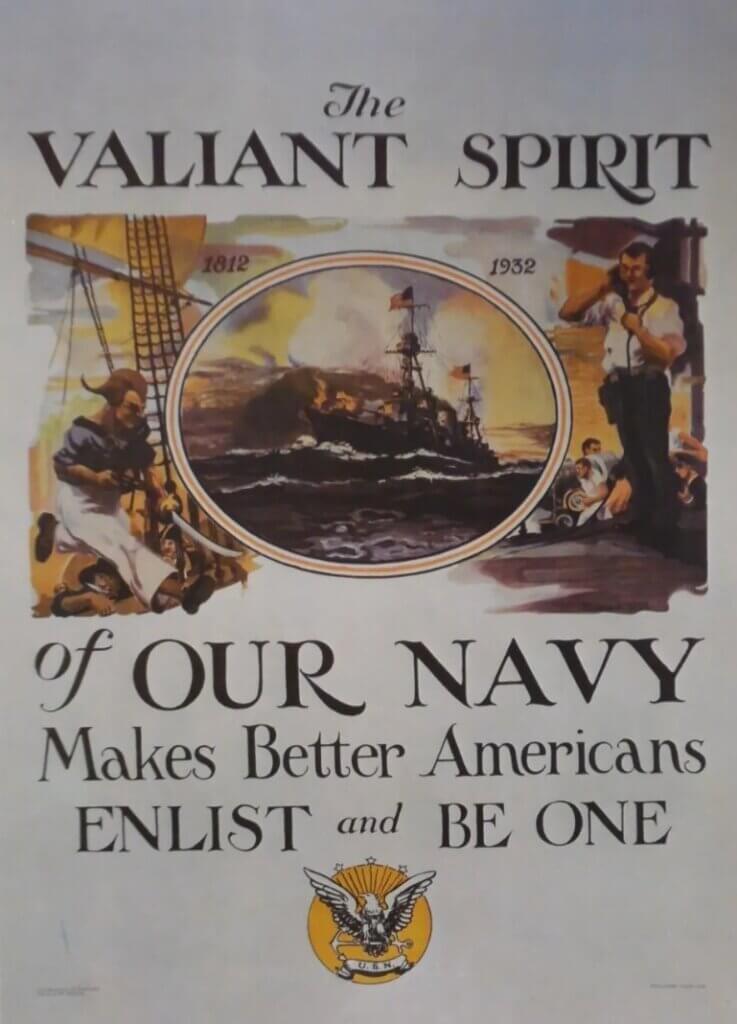
The U.S. Navy faces a critical challenge: attracting the next generation of sailors. Americans for a Stronger Navy, a non-profit organization dedicated to supporting a robust U.S. Navy, today released a comprehensive study titled “Charting the Course: Navigating the Future of Naval Power – A Comprehensive Study on Enhancing U.S. Navy Recruitment and Civic Duty.”
The study investigates the challenges hindering naval recruitment and proposes a collaborative strategy to strengthen recruitment efforts and foster a national culture of service.
“The U.S. Navy has a long and distinguished tradition of safeguarding our nation’s security”, stated Dale A. Jenkins, Senior Advisor of Americans for a Stronger Navy and Author of Diplomats and Admirals. “However, a complex landscape of societal shifts, evolving public perceptions, and administrative hurdles is creating challenges in attracting the next generation of sailors.”
The six-month study, conducted by Americans for a Stronger Navy, employed a multifaceted approach, including data analysis, surveys, and engagement with Navy personnel. The findings highlight several key challenges:
Shifting Eligibility Landscape: Our study identifies a shift in youth eligibility for Navy service due to evolving physical and mental health standards. The Navy is committed to maintaining a strong and qualified applicant pool while adapting to these changes. While solutions like a thorough review process exist, these adaptations may impact processing timelines. The full report offers a detailed analysis of these trends and the Navy’s ongoing efforts to ensure a smooth and efficient recruitment experience.
Competitive Landscape: A strong economy with attractive civilian opportunities, coupled with competition from other branches of the military, presents a significant challenge. A detailed breakdown of this concerning trend and its contributing factors can be found in the full report.
Civic Duty: A Cornerstone of Naval Service Revealed by the Study
The essence of naval service transcends the boundaries of mere duty; it embodies a profound commitment to the nation and its values, as highlighted by our study. Emphasizing civic duty within our recruitment narrative is crucial in inspiring a sense of responsibility and pride among potential recruits.
Negative Public Image: Media portrayals and public misconceptions about Navy service can be discouraging for potential recruits. A detailed breakdown of this concerning trend and its contributing factors can be found in the full report.
Engagement and Collaboration:
- Fostering Support from Business, Industry, and Education: By partnering with business, industry, and education centers, we amplify our message and showcase the Navy’s pivotal role in humanitarian missions and national defense.
Pride of Serving: The Heart of Our Navy
Pride in serving within the Navy is fueled by the honor, courage, and commitment that define our sailors. To cultivate and communicate this pride, we recommend sharing personal stories and testimonials from current and former sailors that reflect the pride and fulfillment derived from naval service.
Rekindling a Spirit of Service
The study proposes a multi-pronged approach to address these challenges and enhance U.S. Navy recruitment:
- Rekindle Pride in Service: Cultivate a national narrative emphasizing the Navy’s vital role in national security and the honor of serving. Counteract negativity through targeted messaging and showcasing success stories.
- Streamline Pre-MEPS Processing: Implement process improvements and technology solutions to expedite the transition between recruitment offices and MEPS, enhancing the candidate experience and reducing wait times.
Ongoing Considerations:
As part of our commitment to continuously adapt and enhance recruitment strategies, we are conducting an exploratory survey on the feasibility of raising the enlistment age to 45. This initiative, driven by feedback from our veteran community, aims to gather diverse perspectives and assess how this change could further enrich our recruitment pool and address the evolving needs of naval service. This survey reflects our proactive approach to exploring all avenues that may contribute to a resilient and dynamic naval force.
By working together, we can ensure the U.S. Navy remains a powerful and resilient force. We invite all Americans to join us in this critical endeavor. By reigniting pride in service and implementing these strategic recommendations, we can build a strong and diverse naval force for the future.
Join us in this pivotal mission to strengthen the U.S. Navy and reshape Navy recruitment and civic duty. Become an active part of our community by getting involved, sharing your unique story, or deepening your understanding through our dedicated campaign. Subscribe today to stay informed and connected. Together, we can build a resilient and vibrant future for our naval forces, ensuring they continue to excel in serving and protecting our nation.
For a detailed copy of the study including an executive summary, please contact us. We’re ready to provide you with comprehensive insights into our findings and recommendations.
